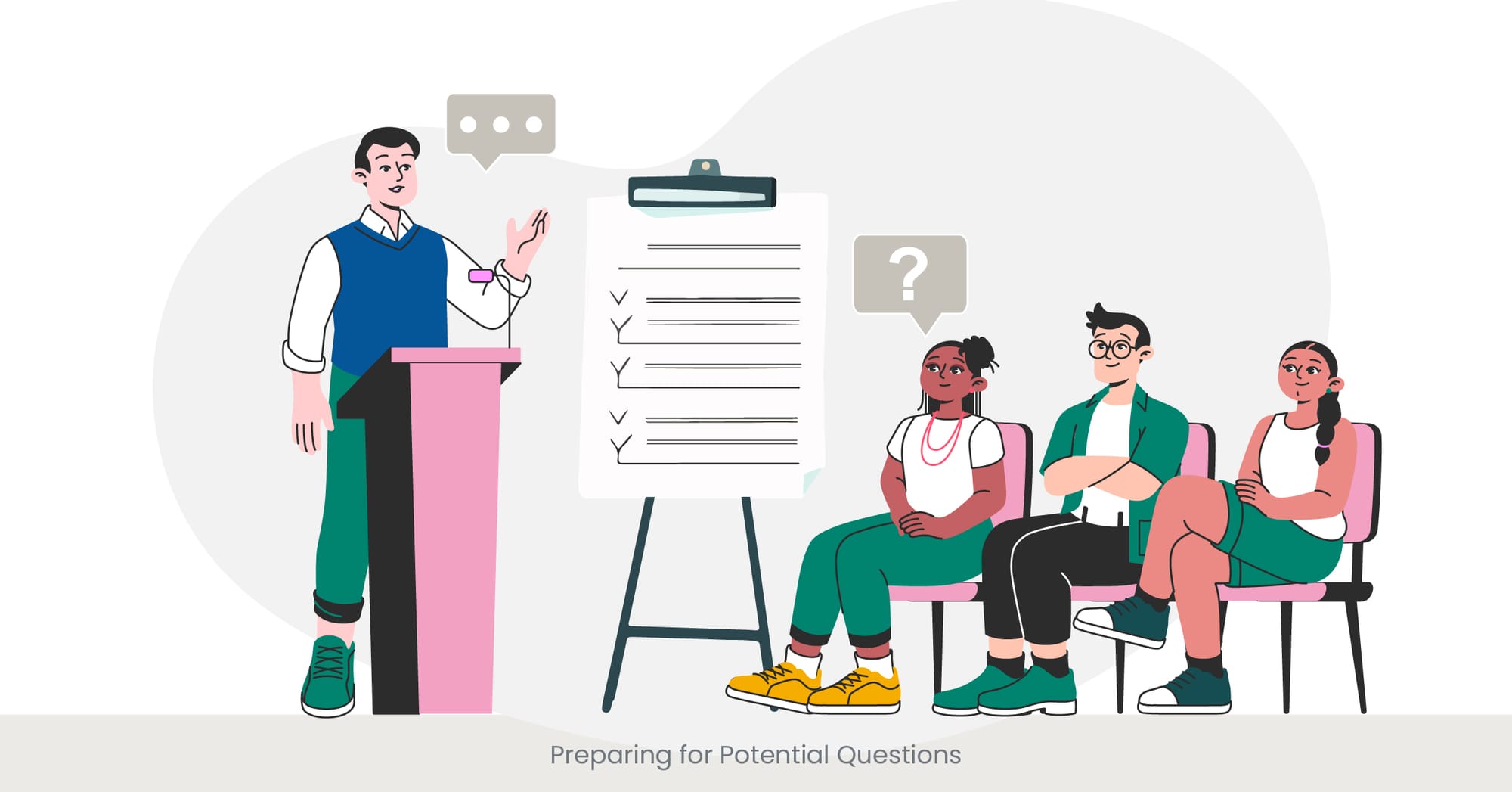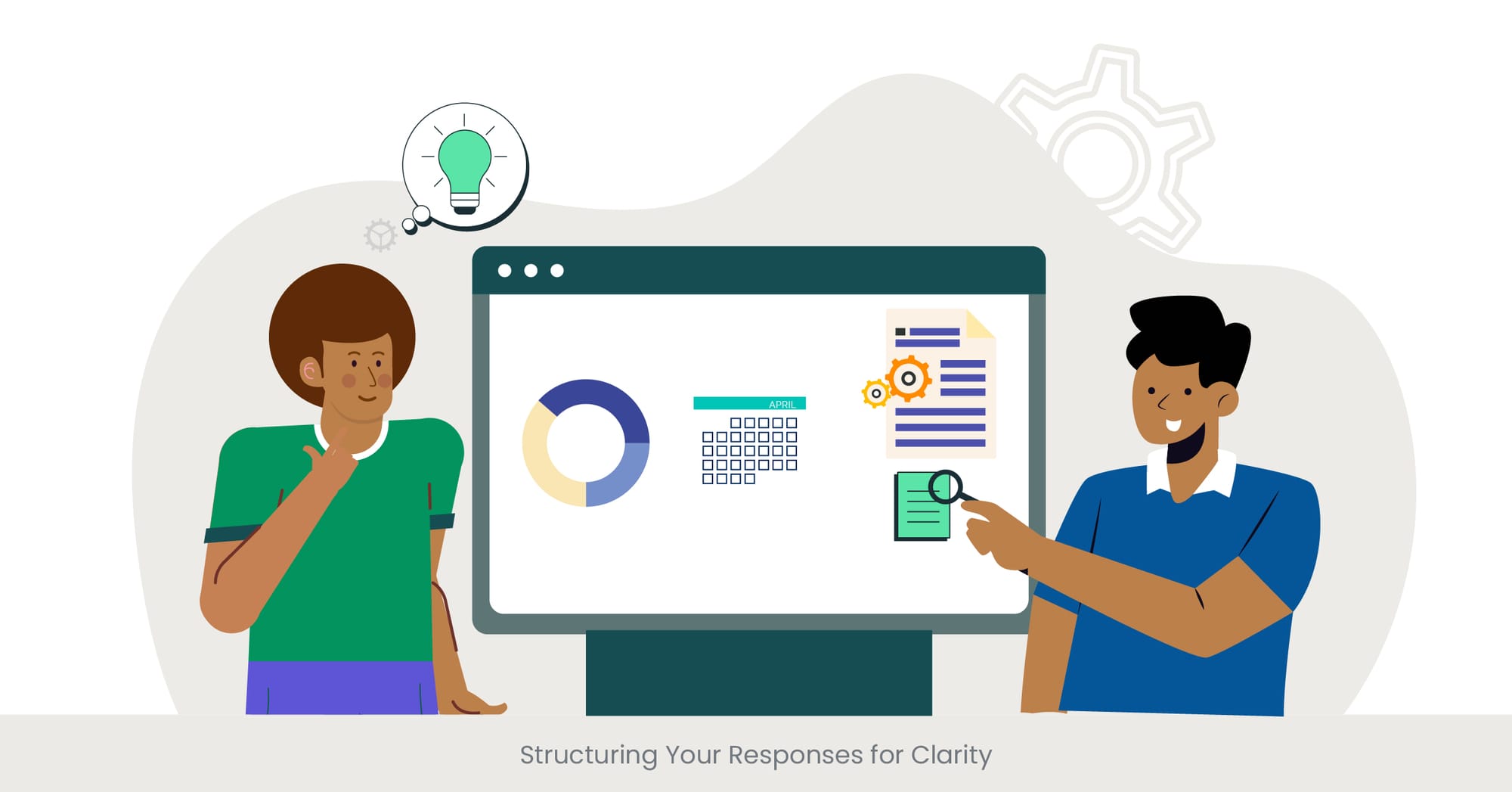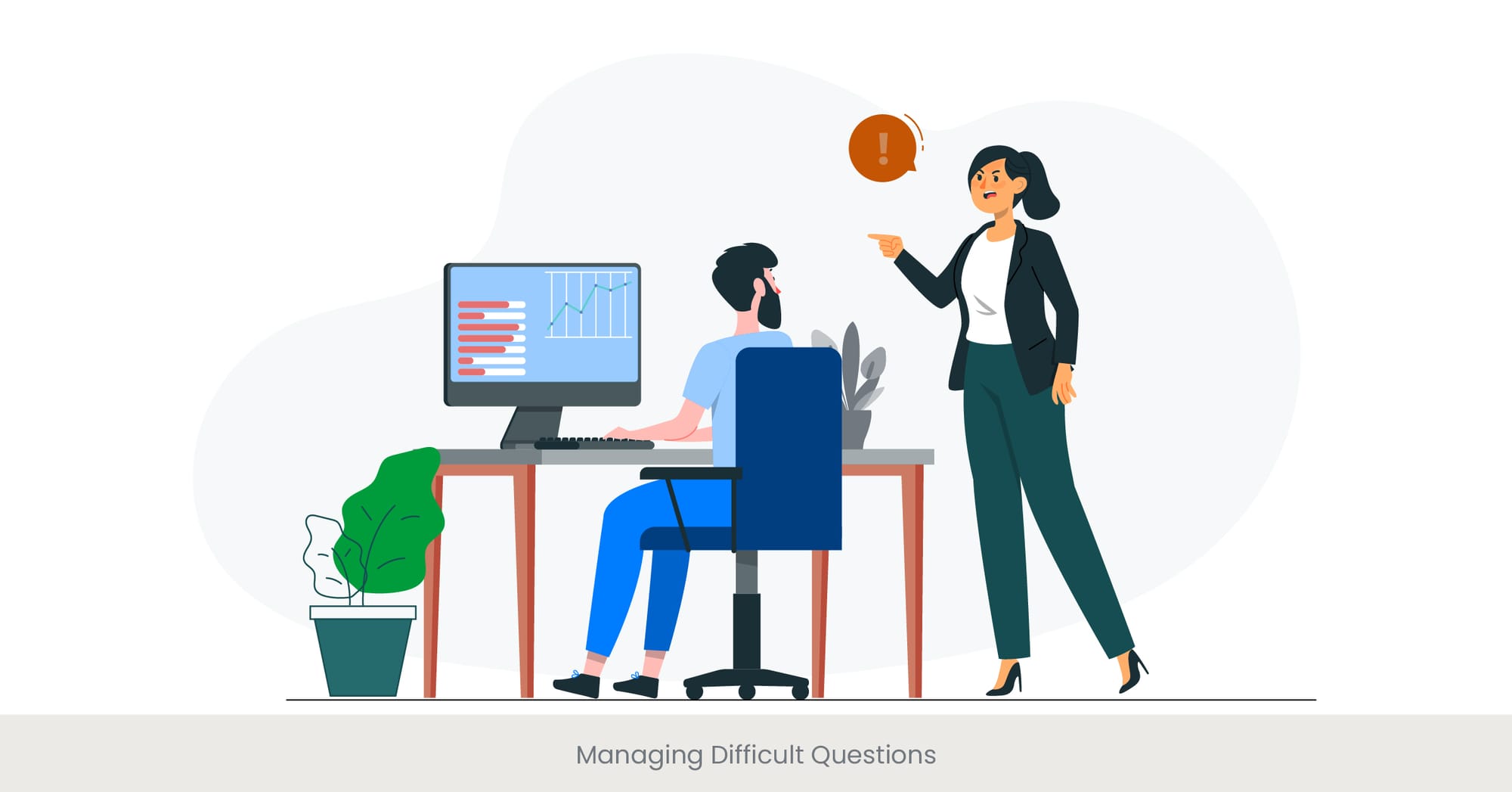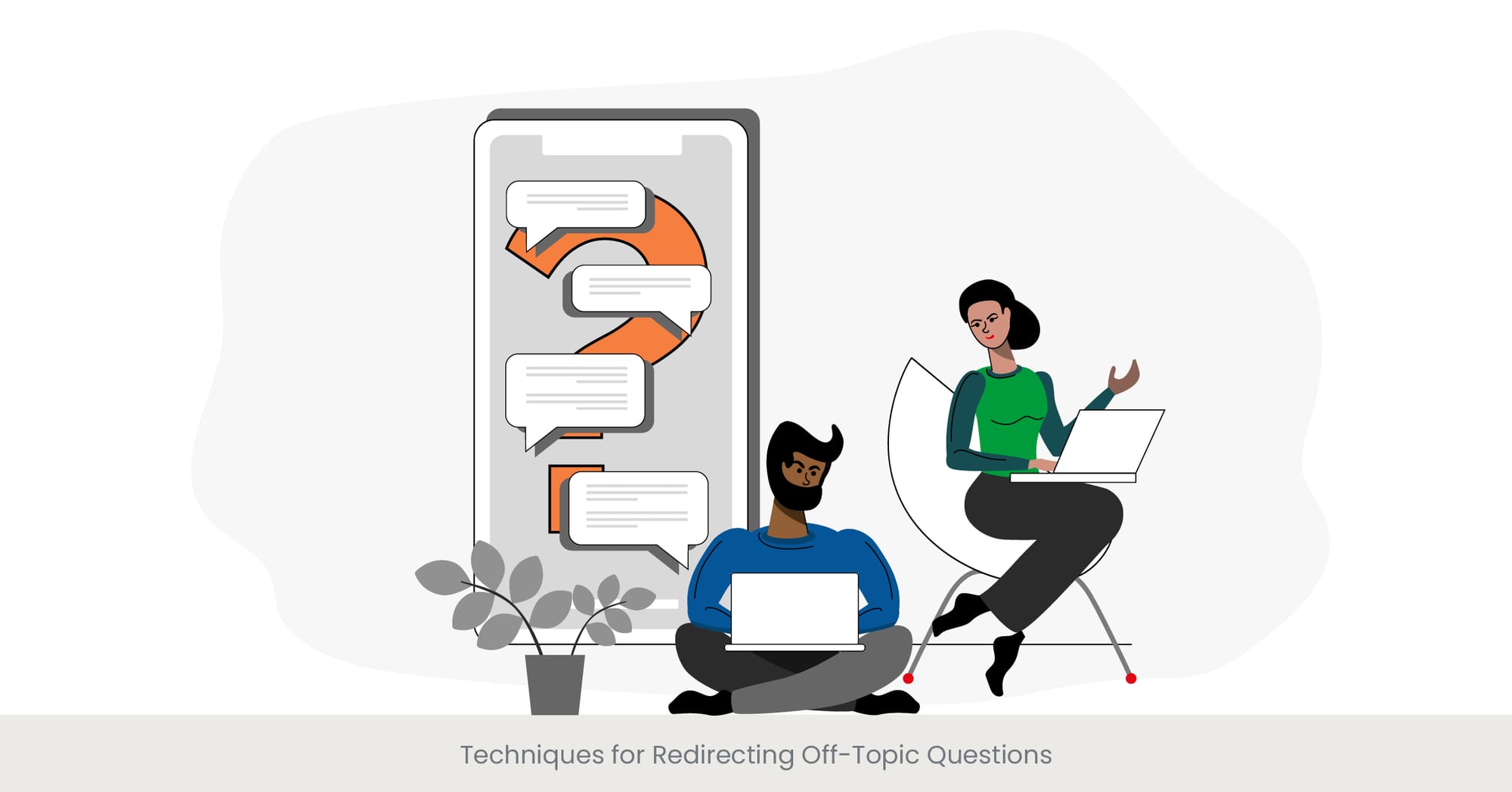
Q&A sessions, an essential element of many events, serve as a dynamic platform where speakers can engage directly with the audience. They allow for a lively exchange of ideas and are critical in enhancing understanding and deepening discussions on the presented topics. Effective management of Q&A sessions not only amplifies the impact of the presentation but also bolsters the speaker's credibility and rapport with the audience. Preparing adeptly for these interactions, structuring responses clearly, and managing the session flow are paramount in leveraging the full potential of Q&A sessions.
Preparing for Potential Questions

Introduction
Preparing for potential questions is the first step in mastering Q&A sessions. It involves anticipating the audience's inquiries based on the content of your presentation and the interests of your attendees. This preparation helps in forming concise, thoughtful answers to great questions that can significantly improve the flow and effectiveness of the session.
Background
Effective preparation requires an understanding of the subject matter and an analysis of the audience’s likely questions. Speakers often review similar past events taking questions, consider the concerns raised, and practice responses to these potential questions. This process ensures a smoother Q&A session, as being prepared helps mitigate the stress associated with spontaneous public questioning.
Real-world Applications
For instance, a seasoned executive might prepare for a corporate earnings call by reviewing questions analysts typically expect to hear or ask during similar events. By preparing responses to these expected inquiries, the executive can convey confidence and control, which positively influences investor confidence. Similarly, politicians often partake in mock sessions before debates or interviews to refine their responses, aiming for clarity and impact.
Reference and Statistics
According to a survey by Toastmasters International, speakers who prepare for potential questions are 30% more effective in delivering their message during Q&A sessions. This preparation not only helps in handling questions more proficiently but also in staying on track during the Q&A. As noted in "The Speaker's Handbook," planning for various question types can significantly reduce anxiety and improve performance in live interactions.
Structuring Your Responses for Clarity

Introduction
Structuring responses with clarity is crucial in Q&A sessions to ensure that the audience fully understands and appreciates the insights being shared during question and answer session. Clear and concise answers help maintain the audience’s interest and make the information more accessible. The aim is to articulate responses that are easy to follow and directly address the questions posed.
Background
The art of structuring clear responses involves organizing thoughts in a logical order and using simple language. It often includes the introduction of a main idea followed by supporting details or examples. This method is beneficial in keeping the responses focused and preventing them from becoming overly complex or tangential, which can confuse the audience and detract from the message.
Real-world Applications
Consider a tech CEO participating in a product launch Q&A session. By structuring responses to highlight the product's features followed by its benefits and potential applications, the CEO effectively communicates the product's value. Such clarity helps the audience understand the product better and fosters greater interest. This technique is also seen in educational settings, where teachers use structured responses to break down complex subjects into understandable segments.
Reference and Statistics
Research highlighted in the "Journal of Public Speaking" reveals that speakers who use structured responses are perceived as more credible and knowledgeable. The study shows a 40% increase in audience retention rates when responses are clearly articulated compared to disorganized answers. Further, incorporating a response model like the PREP (Point, Reason, Example, Point) method can help in structuring answers that are both comprehensive and engaging, as advised by communication experts in "Effective Public Speaking".
Managing Difficult Questions

Introduction
Handling difficult questions during Q&A sessions can be one of the most challenging aspects for speakers. These questions may be complex, confrontational, or off-topic, requiring a balanced approach to maintain the session's decorum and effectiveness. Managing these effectively is crucial for keeping the session on track and maintaining authority and respectability in front of the audience.
Background
Difficult questions often arise from audience members who are either highly knowledgeable or possibly skeptical of the presentation's content. These questions can test a speaker's knowledge and composure. Techniques such as acknowledging the complexity of the person or question, taking a moment to listen and think, or rephrasing the question for clarity are useful strategies that speakers can employ to handle such situations adeptly.
Real-world Applications
For example, during a political debate, a candidate may be asked to respond to a controversial or questioner regarding their policies. A well-prepared response might involve acknowledging the questioner's concerns, clarifying any misunderstandings, and then providing a detailed explanation or justification of the policy. This approach not only addresses the question but also demonstrates the speaker’s competence and thoughtfulness.
Reference and Statistics
A study by the National Communication Association found that speakers who employ strategies such as pause, clarification, and respectful acknowledgment in responding to difficult questions enhance their credibility and audience approval by up to 50%. Moreover, according to "Mastering Public Speaking," using techniques like reframing the question or admitting when one doesn't have an answer can help in diffusing potential hostility and keeping the rest of the session productive.
Techniques for Redirecting Off-Topic Questions

Introduction
Redirecting off-topic questions effectively during Q&A sessions is essential for maintaining the focus and flow of the discussion. It requires tact and skill to steer these interruptions back to the main subject without alienating the audience member or disregarding their curiosity or opinion.
Background
Off-topic questions can derail a session, leading it away from the core message. Techniques for managing these diversions include acknowledging the question, gently pointing out its relevance to the current discussion, and suggesting suggestions that it be addressed at a later time or in a different setting. This not only keeps the session on track but also ensures that all queries are respected.
Real-world Applications
Imagine a scenario where a CEO is discussing corporate strategy and an audience member asks a detailed technical question talking about a specific product. The CEO might say, "That's a great question. It's a bit specific for our current discussion on broader strategies, but I would be happy to discuss and answer it in detail after this session." This method keeps the current discussion on point while not dismissing the questioner's interest.
Reference and Statistics
According to a publication in the "Journal of Effective Meetings," redirecting off-topic questions while maintaining audience engagement can increase the overall effectiveness of Q&A sessions by up to 35%. The guide "Speaking to Influence" mentions that using phrases like "Let's take that offline" or "I’ll get back to you on that" are practical ways of managing such situations, ensuring the speaker stays on track while respecting the audience’s inquiries more questions.
Building Confidence for Live Interactions

Introduction
Building confidence for live interactions, particularly during Q&A sessions, is essential for effective communication. Confidence not only enhances the speaker's credibility but also engages and reassures the audience. Cultivating this trait requires practice, preparation, and a positive mindset.
Presenters' talk track development is a crucial step in boosting confidence for live interactions. By preparing clear and concise talking points, speakers can reduce anxiety and remain focused on the core message. This allows for a seamless interaction with the audience, making Q&A sessions more effective and engaging.
Background
Confidence in live settings stems from a thorough understanding of the topic and familiarity with the audience. It also involves mastering non-verbal cues such as making eye contact, using appropriate gestures, and maintaining a steady voice. Speakers can build their confidence by rehearsing their presentation and anticipated questions, which reduces anxiety and improves overall performance.
Real-world Applications
For example, TEDx speakers often undergo rigorous rehearsals and receive coaching to boost their confidence. These preparations help them handle live Q&A effortlessly, making it seem like an extension of their presentation. Their ability to interact confidently with the audience makes the sessions more engaging and impactful.
Reference and Statistics
A study by Harvard Business Review notes that speakers who engage in regular practice sessions improve their confidence by up to 75% in live scenarios. Furthermore, "The Confident Speaker" highlights that making eye contact with different audience members can not only help in building a connection but also significantly boosts the speaker’s confidence, as it helps in perceiving the audience as supportive rather than judgmental.
Ready to improve your presentation skills?
Encouraging Audience Participation

Introduction
Encouraging audience participation in Q&A sessions is pivotal to creating a dynamic and interactive environment. Active participation not only enhances audience engagement but also enriches the session by introducing diverse perspectives and insights. Facilitating this involvement requires strategic prompting and a welcoming atmosphere.
Engaging presentation narratives captivate the audience by weaving compelling stories around key points. These narratives keep listeners emotionally invested and facilitate a deeper understanding of the subject. By connecting facts with relatable anecdotes, speakers can create a memorable experience that enhances the overall impact of their presentation.
Interactive talk tracks involve prompting audience engagement through questions, polls, or discussions. These tracks create a dynamic presentation atmosphere, allowing speakers to adapt in real-time and foster an inclusive environment. By incorporating interactive elements into their talk tracks, presenters keep the audience active and interested throughout the event.
Background
Effective techniques to encourage participation include asking open-ended questions, using polling tools, or inviting audience members to share stories about their experiences related to the topic. Creating a comfortable environment where participants feel their contributions are valued is crucial. This may involve setting ground rules for respect and inclusivity at the beginning of the session.
Real-world Applications
For instance, at a conference on digital marketing, a speaker might begin the Q&A by posing a question to the audience about their experiences with recent marketing trends. This approach not only kickstarts the discussion but also gives the audience a sense of ownership in the conversation, thereby boosting their engagement. Additionally, using tools like live polls during a presentation can spur interaction and provide immediate data to enrich the session.
Reference and Statistics
Research from the "International Journal of Event Management" indicates that sessions with active audience participation see a 40% higher satisfaction rate among attendees. The book "Engaging Ideas" also suggests that participants are more likely to retain information and rate the event positively when they are actively involved, demonstrating the importance of audience interaction in successful Q&A sessions.
Want more tips on audience engagement?
Using Q&A Sessions to Reinforce Your Message

Introduction
Using Q&A sessions to reinforce your message is a strategic approach to ensure that key points from your presentation are emphasized and remembered. These sessions provide an opportunity to highlight the most important aspects of your speech, addressing any uncertainties that might linger in the audience’s mind.
Effective talk tracks for events serve as a structured guide to ensure a smooth delivery. These tracks enable speakers to stay focused, reinforce their key messages, and adjust based on audience engagement. A well-prepared talk track helps presenters navigate the session, ensuring a clear and impactful communication of their ideas.
Background
The technique involves preparing to reiterate and expand upon central themes during the Q&A. By anticipating related questions, a speaker can plan responses that tie back to the core messages, thereby strengthening the impact of the overall presentation. This method not only clarifies key points but also allows the speaker to address aspects that might not have been fully covered in the main presentation.
Real-world Applications
Consider a public health expert discussing the importance of vaccination. During the Q&A, the questioner or expert could use questions about vaccine safety to reinforce key messages about its benefits and discuss the research supporting its efficacy. This focused approach ensures that the audience leaves with a clear understanding of the presentation’s main arguments, potentially increasing public trust and compliance.
Reference and Statistics
According to findings in the "Journal of Communication," speakers who effectively use Q&A sessions to reinforce their messages see up to a 50% increase in audience recall of key points. "Effective Presentation Techniques" also notes that this strategic use of Q&A can transform passive listeners into active participants, further embedding the session's main points in their memory.
Looking for tailored Q&A strategies?
Follow-Up Strategies for Unanswered Questions

Introduction
Effective follow-up strategies for unanswered questions are crucial in Q&A sessions to ensure that all audience inquiries receive attention, even if they cannot be addressed during the event. These strategies demonstrate the speaker's commitment to transparency and engagement, fostering a deeper connection with the audience.
Presentation talk tracks provide a structured framework that guides speakers through their entire presentation, ensuring they stay on topic. Effective talk tracks can also include notes for addressing follow-up questions after the event, ensuring that no topic is left unaddressed. This makes follow-up communication more impactful and comprehensive.
Background
Follow-up strategies may include dedicating a section of a website for Q&A post-event, sending out a follow-up email answering additional questions, or inviting further discussion via social media platforms. These methods help in maintaining an ongoing dialogue with the audience, reinforcing the session’s messages and enhancing the speaker or group's credibility.
Real-world Applications
For example, after a technology conference, the organizing company could have to spend additional resources to set up an online forum where speakers can post detailed answers to the more complex questions posed during their talks. This not only extends the life of the event but also caters to a broader audience, potentially increasing the reach and impact of the presentation.
Reference and Statistics
According to a study by the Event Management Association, events that included a follow-up Q&A component reported a 30% higher attendee satisfaction rate. Additionally, "The Art of Follow-Up" highlights that providing comprehensive answers to all questions after an event can lead to a stronger audience engagement and loyalty, as attendees feel valued and heard.
Want to see how follow-ups enhance engagement?
The Role of Moderators in Q&A Sessions

Introduction
The role of moderators in Q&A sessions is pivotal in ensuring the smooth flow and effectiveness of these interactions. Moderators act as the bridge between the speaker and the the room audience, guiding the conversation, maintaining order, and ensuring that the session adheres to the planned structure and timing.
Background
Moderators are responsible for selecting and answering questions that are relevant and beneficial to the discussion, managing the pacing of the session, and intervening when questions become repetitive or off-topic. Their ability to navigate the session effectively can significantly influence the quality of the interaction and the satisfaction of both the speaker and the audience.
Real-world Applications
In high-profile events such as televised political debates, moderators play a crucial role. They ensure that each candidate receives equal time to speak, that the questions asked are of public interest, and that the candidates adhere to the rules of the debate. This not only keeps the discussion fair and focused but also enhances the viewers' understanding of each candidate's positions.
Reference and Statistics
A study in "Moderation in Focus" indicates that well-moderated sessions can improve audience retention rates by up to 25%. The guide "Mastering Moderation" notes that effective moderators who use clear communication and firm time management skills can significantly reduce the occurrence of unresolved or tangentially answered questions, leading to a more productive and enlightening session.
Need expert moderators for your event? Reach out to us!
Learning from Q&A Sessions for Future Improvements

Introduction
Learning from Q&A sessions for future improvements is of course an integral part of evolving as a speaker and enhancing the quality of events. Reflecting on the questions asked, the responses given, and the overall flow of the session provides valuable insights that can be used to refine future presentations and interactions.
Background
This learning process involves reviewing feedback from the audience, using criticism, assessing one person's own performance, and identifying areas for improvement. It might also include analyzing recordings of the session to understand better the dynamics of interaction and the effectiveness of responses. This continuous improvement cycle helps speakers develop their skills and adapt their content to better meet the needs of their audience.
Real-world Applications
For instance, after a major product launch, a company might review the Q&A session to gauge audience reactions and understand common concerns or misconceptions about the product. This feedback can then inform marketing strategies, product adjustments, or future presentations to ensure clearer communication and better audience engagement.
Reference and Statistics
According to "The Continuous Improvement Handbook," organizations that systematically review and learn from their Q&A sessions report a 45% improvement in audience satisfaction over time. The latter suggest the practice of using these sessions as learning tools not only enhances speaker abilities but also leads to more successful and impactful events.
Need expert moderators for your event?
FAQs on Handling Q&A Sessions
What is a Q and A session?
A Q&A session is a structured format used in various events where speakers answer questions posed by the audience. This session allows for direct interaction between the speaker and the audience, providing an opportunity to clarify and expand on topics covered in the presentation.
What is the purpose of the Q&A?
The primary purpose of a Q&A session is to clarify doubts, address audience concerns, and deepen the understanding of the topic discussed. It enhances audience engagement and ensures that the speaker's message is effectively communicated and understood.
What are good questions for a Q&A?
Good questions are relevant to the topic, concise, and formulated to elicit detailed responses. They should challenge the speaker to respond and provide depth and insight, enhancing the audience's understanding of the subject.
What is a Q&A event?
A Q&A event is specifically organized to facilitate a detailed and open dialogue between speakers and the audience. These events are often focused on specific topics, allowing for a deep dive into subjects with the opportunity for the audience to ask questions directly to experts.
What do you mean by preparation?
In the context of Q&A sessions, preparation refers to the process of anticipating potential questions, rehearsing responses, and familiarizing oneself in advance with the topic and audience to ensure confident and effective participation.
What is another word for 'in preparation'?
Another word for "in preparation or advance stage" is "in readiness" or "getting ready," which involves setting up or planning ahead for an event or action.
What is a preparation example?
An example of preparation for a Q&A session could involve researching the audience's interests, preparing responses to anticipated questions, and practicing speaking points to ensure clarity and confidence during the event.
What does preparation mean in the Bible?
In the Bible, preparation often refers to the act of waiting or getting ready spiritually or materially for something significant, such as an event prophesied or instructed by God. It usually implies readiness and proactive planning.
What are examples of techniques?
Techniques in handling Q&A sessions include using the PREP method (Point, Reason, Example, Point) for clear responses, redirecting off-topic questions, and employing positive body language to engage the audience.
What is another word for technique?
Another word for "technique" is "method" or "approach," which refers to a specific way of doing something to achieve a desired result.



%20(1).jpg)
%20(1).jpg)


